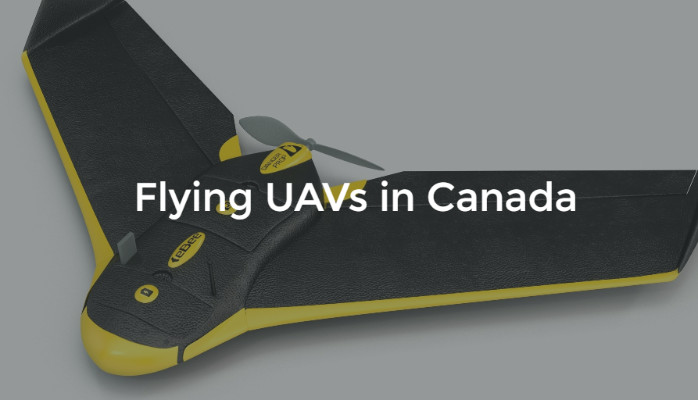
Flying a drone / UAV for work or research that is under 2 kg in Canada
Before you fly your drone / UAV that is under 2 kg for work or research in Canada, make sure you understand the rules that apply and are sure to follow them. Not doing so could put lives at risk and cost you up to $25,000 in fines.
If your drone / UAV weighs under 2 kg and you are flying for work or research in Canada, most UAV operators must get Transport Canada's permission. However, under very specific, lower-risk circumstances, you may qualify for an exemption.
You must follow the strict safety conditions outlined below for UAVs that weigh less than 2 kg.
If you cannot meet all the conditions in the UAV exemption, you must apply for an SFOC. Basically if you wish to fly your UAV in anything other than Class G airspace or closer than 9 km to the centre of any aerodrome or a built up area, you must apply for an SFOC.
Exemption requirements for operating UAVs without permission
- Be safe, well trained and know the rules of the sky
- Be 18 years old, or at least 16 years old to conduct research under academic supervision
- Have at least $100,000 liability insurance
- Be alert - not tired or under the influence of alcohol or drugs
- Inspect your UAV and the site before flight to ensure they are safe
- Get permission before you go onto private property
- Inform Air Traffic Services if your UAV enters controlled airspace
- Give right -of-way to manned aircraft
- Fly during daylight and in good weather
- Keep your aircraft in direct line of sight and always be able to see it with your own eyes (ie. no binoculars, scopes, etc.)
- Verify that radio frequencies/transmissions won't affect control of your UAV
- Have an emergency plan ahead of time
- Carry a copy of your UAV exemption, proof of liability insurance, contact information, and aircraft system limitations
- Follow the manufacturer's operating and emergency procedures, including those if the remote control loses contact with the aircraft
- Respect laws from all levels of government
- Operate only one UAV at a time, with a single remote control
- Immediately stop all operations if you can no longer meet the exemption requirements or if the safety of a person, property or other aircraft is at risk
- Stay at least 30 metres away from people, animals, buildings, structures, and vehicles not involved in the operation
- DO NOT: Fly closer than 9 km from forest fires, airports, heliports, aerodromes, or built-up areas
- DO NOT: Fly over military bases, prisons or in controlled or restricted airspace
For a more detailed look at all the exemption criteria please visit the Transport Canada link below.
TC Exemptions for UAVs that weigh less than 2 kg.
Again, if you cannot meet all of the above requirements or wish to fly your UAV in anything other than Class G airspace or closer than 9 km to the centre of any aerodrome or a built up area, you must apply for an SFOC.
If you have any questions or more information please do not hesitate to contact me.
Lande Edmiston, P.Tech.(Eng.) is a UAV Pilot / Project Manager / Civil Design Lead at Higher Ground Consulting. He works and plays in the Rocky Mountains near Calgary, AB. Higher Ground Consulting believes in Making Tomorrow Better Than Today!
VP Operations - Calgary at Challenger Geomatics Ltd.
7yLink works fine for me Lande Edmiston, P.Tech.(Eng.), thanks for posting the reminder.